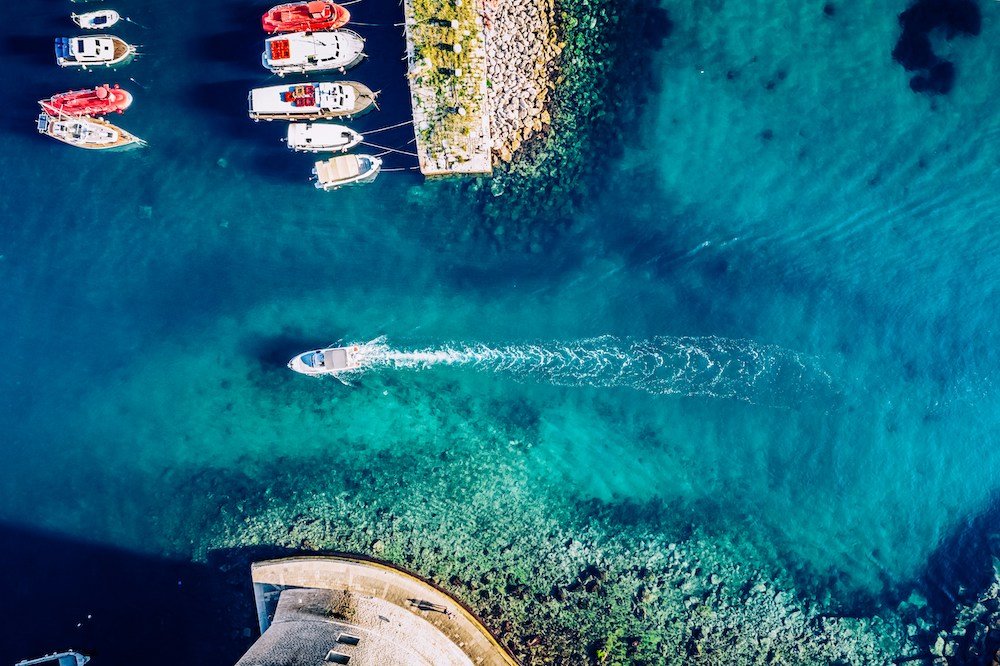
Want to discover the perfect Croatia islands you must visit for your next holiday?
Croatia, nestled in the heart of the Adriatic Sea, boasts a mesmerizing coastline dotted with over a thousand islands, each with its own unique charm and allure.
From secluded coves and pristine beaches to rich cultural heritage sites, Croatia islands offer a diverse tapestry of landscapes and experiences for travelers to explore.
Spanning across the eastern coast of the Adriatic Sea, Croatia is renowned for its stunning natural beauty and diverse landscapes.
The country’s picturesque coastline stretches over 5,800 kilometers, adorned with rocky cliffs, turquoise waters, and lush greenery.
Croatia’s islands, numbering more than a thousand, vary in size, shape, and character, offering an unparalleled opportunity for island hopping and exploration.
The Croatian islands play a pivotal role in the country’s thriving tourism industry, attracting millions of visitors from around the globe each year.
With their pristine beaches, crystal-clear waters, and rich cultural heritage, Croatia islands have become synonymous with luxury escapes, adventure holidays, and cultural immersion experiences.
From historic towns steeped in tradition to hidden coves framed by rugged cliffs, each island beckons travelers to uncover its secrets and bask in its natural splendor.
In this article, we embark on a journey to uncover the hidden gems and breathtaking landscapes of Croatia’s most beautiful islands.
Our goal is to showcase 15 of the most captivating Croatian islands, each offering a unique blend of natural beauty, cultural heritage, and recreational opportunities.
Whether you’re seeking secluded beaches, historic landmarks, or vibrant nightlife, these islands promise an unforgettable experience that will leave you enchanted and inspired.
Criteria for Selection
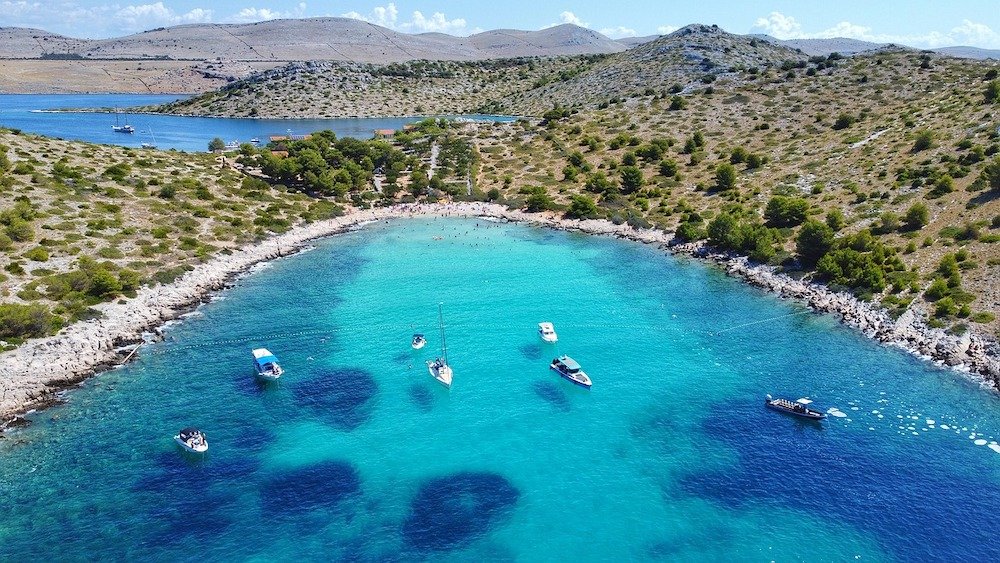
Choosing the most beautiful Croatian islands requires careful consideration of various factors that contribute to their allure and appeal.
Our selection process is based on four key criteria, each highlighting the unique aspects that make these islands stand out among the Adriatic archipelago.
1. Natural Beauty
The natural beauty of Croatian islands is unparalleled, with rugged coastlines, pristine beaches, and azure waters that mesmerize visitors from around the world.
Islands boasting dramatic cliffs, secluded coves, and lush vegetation are given special consideration for their breathtaking landscapes and scenic vistas.
From the vibrant hues of sunsets reflecting off tranquil bays to the rugged beauty of untouched wilderness, Croatia’s islands offer a visual feast for the senses that epitomizes the essence of Mediterranean charm.
2. Cultural Significance
Beyond their natural splendor, Croatian islands are steeped in rich cultural heritage, with centuries-old traditions, historic landmarks, and architectural marvels that tell the story of the region’s past.
Islands with significant archaeological sites, well-preserved medieval towns, and vibrant local communities are celebrated for their cultural significance and contribution to Croatia’s cultural tapestry.
Whether exploring ancient ruins, attending traditional festivals, or savoring local cuisine, visitors to these islands are immersed in a world of history, art, and tradition that continues to thrive to this day.
3. Accessibility
Accessibility plays a crucial role in determining the appeal of Croatian islands, with convenient transportation options and well-developed infrastructure enhancing the visitor experience.
Islands with easy access to mainland ports, ferry services, and airports are favored for their convenience and connectivity, making them accessible to travelers from near and far.
Additionally, islands with a range of accommodation options, dining establishments, and recreational facilities cater to diverse preferences and ensure a seamless travel experience for visitors seeking relaxation, adventure, or cultural immersion.
4. Activities and Attractions
The diversity of activities and attractions available on Croatian islands adds depth and richness to the visitor experience, offering something for every traveler’s taste and interest.
Islands renowned for water sports, such as snorkeling, diving, and sailing, attract adventure enthusiasts seeking thrills and excitement amid the crystal-clear waters of the Adriatic.
Likewise, islands with scenic hiking trails, cycling routes, and nature reserves provide opportunities for outdoor exploration and appreciation of the region’s natural wonders.
Cultural events, culinary tours, and artisan workshops offer glimpses into the local way of life and provide memorable experiences that leave a lasting impression on visitors.
By considering these criteria, we have curated a list of the 15 most beautiful Croatian islands that exemplify the best of what the Adriatic has to offer.
Each island offers a unique blend of natural splendor, cultural heritage, accessibility, and recreational opportunities that promise an unforgettable journey of discovery and exploration.
Join us as we uncover the hidden treasures and timeless beauty of Croatia’s most enchanting islands.
1. Korčula

Nestled in the azure waters of the Adriatic Sea, Korčula is renowned for its captivating beauty, rich history, and enchanting medieval charm.
As one of the most picturesque islands in Croatia, Korčula beckons travelers with its idyllic landscapes, quaint villages, and cultural treasures waiting to be discovered.
Korčula, often referred to as the “Emerald Isle,” is located in the southern part of the Dalmatian archipelago.
Its rugged coastline is adorned with secluded bays, lush vineyards, and olive groves, while its interior boasts rolling hills, pine forests, and ancient stone villages.
The island’s crown jewel is the medieval town of Korčula, with its impressive Venetian architecture, narrow cobblestone streets, and fortified walls that evoke a sense of timeless elegance and grandeur.
Highlighted Attractions and Activities
Korčula offers a wealth of attractions and activities for visitors to explore and enjoy.
The old town, often compared to a mini-Dubrovnik, is a treasure trove of historic landmarks, including the magnificent St. Mark’s Cathedral, believed to be designed by renowned architect Marko Andrijić.
Visitors can wander through the labyrinthine streets, discovering hidden squares, charming cafes, and artisan shops selling locally crafted souvenirs.
For history enthusiasts, a visit to the Marco Polo House is a must.
This 13th-century building is believed to be the birthplace of the legendary explorer Marco Polo, offering insight into his fascinating life and travels.
The Korčula Town Museum, housed in the Gabrielis Palace, showcases artifacts and exhibits tracing the island’s rich history, from ancient times to the present day.
Nature lovers will be captivated by Korčula’s stunning landscapes and pristine beaches.
From the secluded coves of Badija and Vrnik to the sandy shores of Lumbarda, the island offers a variety of coastal paradises perfect for swimming, sunbathing, and water sports.
Outdoor enthusiasts can explore the island’s hiking and cycling trails, offering panoramic views of the Adriatic and the surrounding islands.
Accessibility and Accommodation Options
Korčula is easily accessible via ferry from the mainland ports of Split, Dubrovnik, and Orebić on the Pelješac Peninsula.
The island is served by regular ferry services, making it convenient for travelers to reach.
Additionally, Korčula has a small airport located near the town of Vela Luka, offering seasonal flights from major cities in Croatia and Europe.
Accommodation options on Korčula cater to a range of preferences and budgets, from luxury hotels and boutique guesthouses to charming villas and apartments.
Visitors can choose to stay within the historic walls of Korčula Town, where accommodations offer panoramic views of the Adriatic and easy access to the town’s attractions.
Alternatively, accommodations in the island’s picturesque villages provide a tranquil retreat amidst nature’s beauty, allowing guests to immerse themselves in the island’s laid-back atmosphere and traditional way of life.
2. Šolta
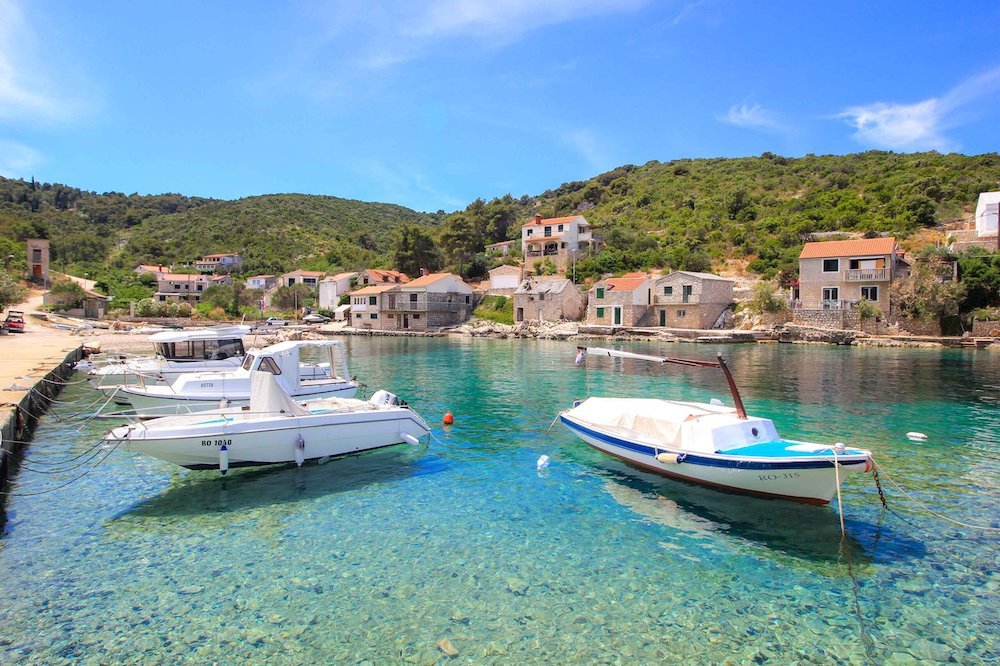
Situated in the shimmering waters of the Adriatic, Šolta is a hidden gem waiting to be explored.
This tranquil island boasts unspoiled natural beauty, charming fishing villages, and a laid-back atmosphere that beckons travelers seeking an authentic Croatian experience.
Šolta, known as the “Island of Roses,” is located near the bustling city of Split on the Dalmatian coast.
Its rugged coastline is fringed with secluded coves, pristine beaches, and crystal-clear waters ideal for swimming and snorkeling.
The island’s interior is dotted with olive groves, vineyards, and fragrant pine forests, providing a picturesque backdrop for leisurely walks and outdoor adventures.
With its untouched landscapes and unhurried pace, Šolta offers a serene retreat away from the crowds, where visitors can unwind and immerse themselves in nature’s tranquility.
Highlighted Attractions and Activities
Šolta offers a myriad of attractions and activities for visitors to enjoy.
The charming village of Maslinica is a must-visit destination, with its scenic harbor, medieval castle, and waterfront cafes serving freshly caught seafood and local delicacies.
The historic town of Grohote, Šolta’s main settlement, is home to ancient churches, stone houses, and a bustling market where visitors can sample traditional island products such as olive oil, honey, and wine.
Nature enthusiasts will delight in Šolta’s scenic landscapes and outdoor adventures.
The island’s network of hiking and biking trails meander through olive groves, vineyards, and pine forests, offering panoramic views of the Adriatic and the surrounding islands.
Pristine beaches such as Šešula, Necujam, and Livka beckon sun-seekers with their golden sands and turquoise waters, perfect for swimming, sunbathing, and water sports.
Accessibility and Accommodation Options
Šolta is easily accessible from the mainland via ferry or catamaran from the port of Split.
Regular ferry services connect the island to Split throughout the year, with additional services available during the peak summer season.
The ferry ride offers stunning views of the Adriatic and takes approximately one hour, making it a convenient and scenic journey for travelers.
Accommodation options on Šolta range from cozy guesthouses and family-run apartments to luxury villas and boutique hotels.
Visitors can choose to stay in the charming villages of Stomorska, Rogac, or Maslinica, where accommodations offer tranquil settings and panoramic views of the sea.
Alternatively, secluded villas and holiday homes nestled in the island’s countryside provide privacy and serenity amidst nature’s beauty, allowing guests to relax and unwind in style.
3. Lošinj
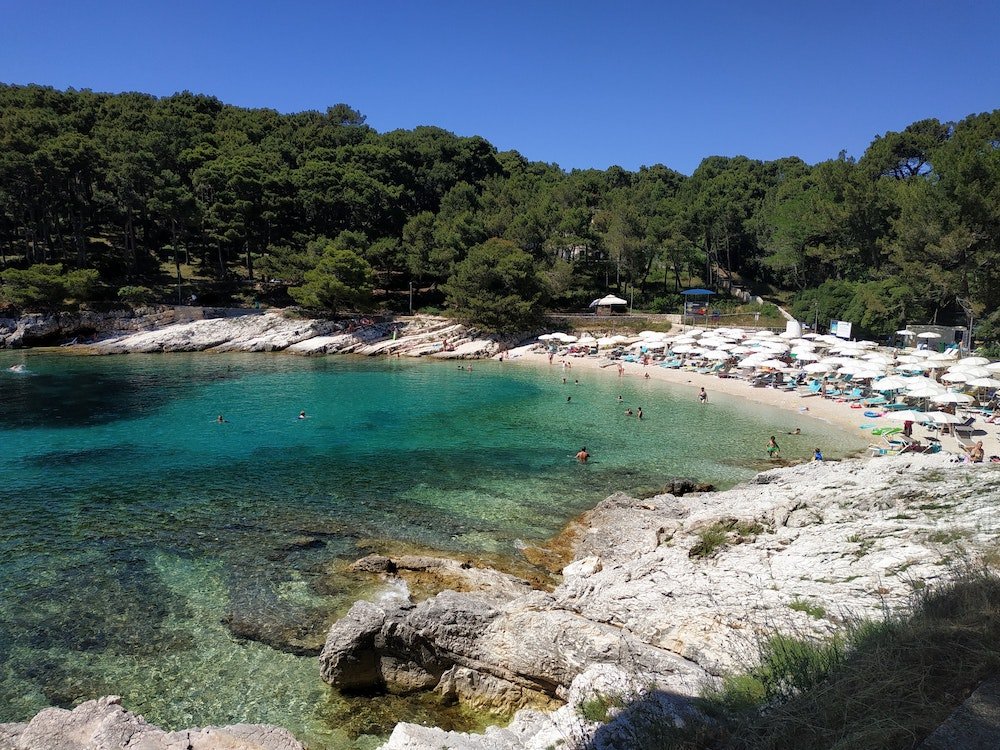
Tucked away in the northern Adriatic Sea, Lošinj is a hidden paradise known for its pristine natural beauty, lush Mediterranean vegetation, and healing climate.
This enchanting island offers a perfect blend of tranquility, adventure, and rejuvenation, making it a beloved destination for travelers seeking serenity and wellness amidst nature’s embrace.
Lošinj, often referred to as the “Island of Vitality,” is located in the Kvarner Bay, off the coast of Croatia. Its mild climate, abundant sunshine, and fresh sea air have earned it a reputation as a health and wellness destination since the 19th century.
The island’s rugged coastline is adorned with secluded coves, rocky cliffs, and turquoise bays, while its interior is blanketed with fragrant pine forests, olive groves, and colorful wildflowers.
With its pristine landscapes and unpolluted air, Lošinj offers a tranquil retreat for travelers seeking relaxation, rejuvenation, and natural beauty.
Highlighted Attractions and Activities
Lošinj offers a wealth of attractions and activities for visitors to explore and enjoy.
The island’s main town, Mali Lošinj, is a charming seaside resort with a rich maritime heritage, picturesque harbor, and pastel-colored villas lining the waterfront.
Visitors can wander through the narrow streets, discovering historic landmarks such as the Church of St. Martin, the Fritzy Palace, and the Lošinj Museum, which showcases the island’s cultural and maritime history.
Nature enthusiasts will be captivated by Lošinj’s stunning landscapes and outdoor adventures.
The island’s network of hiking and cycling trails meanders through pine-scented forests, offering panoramic views of the Adriatic and the surrounding islands.
Pristine beaches such as Sunčana Bay, Čikat Bay, and Valdarke Bay beckon sun-seekers with their crystal-clear waters and golden sands, perfect for swimming, sunbathing, and water sports.
Accessibility and Accommodation Options
Lošinj is easily accessible via ferry from the mainland ports of Rijeka and Zadar, as well as neighboring islands such as Cres and Krk.
Regular ferry services connect the island to the mainland throughout the year, with additional services available during the peak summer season.
The ferry ride offers scenic views of the Kvarner Bay and takes approximately one to two hours, depending on the departure point.
Accommodation options on Lošinj cater to a range of preferences and budgets, from luxury resorts and boutique hotels to cozy guesthouses and self-catering apartments.
Visitors can choose to stay in Mali Lošinj, where accommodations offer easy access to the town’s attractions, restaurants, and shops.
Alternatively, secluded villas and holiday homes nestled in the island’s countryside provide privacy and tranquility amidst nature’s beauty, allowing guests to unwind and rejuvenate in serenity.
4. Vis
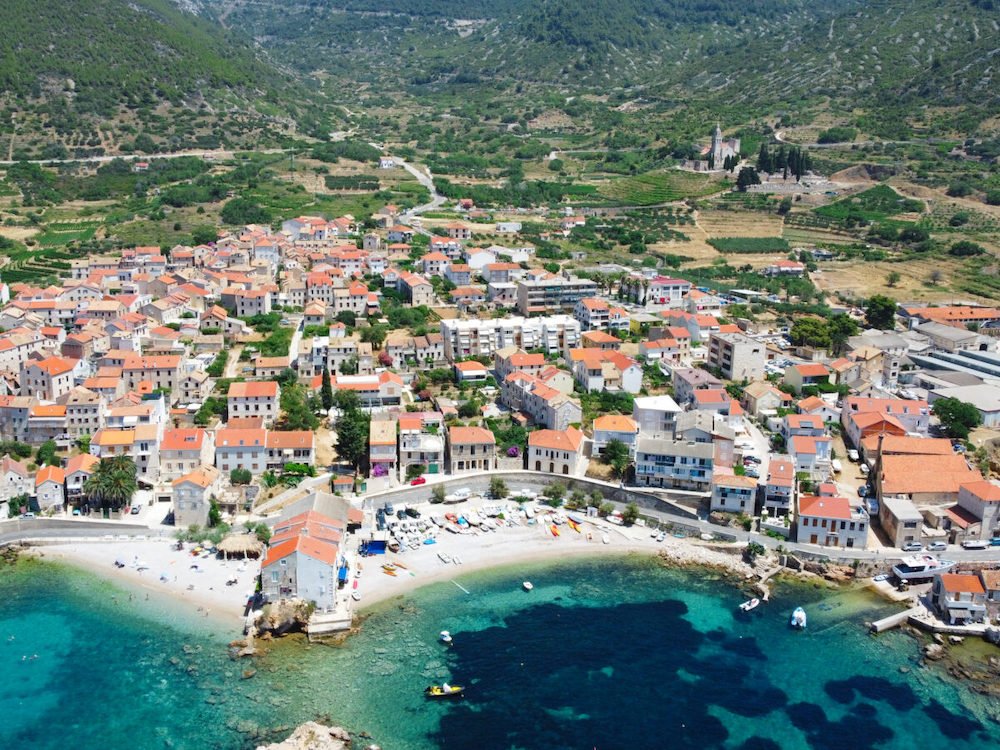
Located in the mesmerizing Adriatic Sea, Vis is a pristine island paradise known for its rugged coastline, turquoise waters, and rich cultural heritage.
Steeped in history and natural beauty, Vis offers a captivating blend of tranquility, adventure, and exploration for travelers seeking an authentic Croatian experience.
Vis, the farthest inhabited island from the Croatian mainland, is celebrated for its unspoiled landscapes, secluded beaches, and traditional charm.
Its rugged coastline is dotted with hidden coves, limestone cliffs, and azure bays, while its interior boasts rolling hills, vineyards, and olive groves that evoke a sense of timeless beauty and tranquility.
With its untouched landscapes and laid-back atmosphere, Vis offers a peaceful retreat away from the hustle and bustle of modern life, where visitors can reconnect with nature and immerse themselves in island living.
Highlighted Attractions and Activities
Vis offers a wealth of attractions and activities for visitors to explore and enjoy.
The island’s main town, also named Vis, is a picturesque fishing village with a rich maritime history, colorful waterfront houses, and quaint cobblestone streets.
Visitors can wander through the town’s historic center, discovering ancient churches, Venetian-style palaces, and charming cafes serving freshly caught seafood and local delicacies.
Nature enthusiasts will be delighted by Vis’s stunning landscapes and outdoor adventures.
The island’s network of hiking trails leads through pine forests, vineyards, and olive groves, offering panoramic views of the Adriatic and the neighboring islands.
Pristine beaches such as Stiniva Cove, Srebrna Beach, and Stončica Bay beckon sun-seekers with their crystal-clear waters and secluded shores, perfect for swimming, snorkeling, and relaxation.
Accessibility and Accommodation Options
Vis is accessible via ferry or catamaran from the mainland ports of Split and Ancona in Italy.
Regular ferry services connect the island to Split throughout the year, with additional services available during the peak summer season.
The ferry ride offers scenic views of the Adriatic and takes approximately two to three hours, depending on the departure point.
Accommodation options on Vis cater to a range of preferences and budgets, from boutique hotels and guesthouses to private villas and apartments.
Visitors can choose to stay in the charming town of Vis, where accommodations offer easy access to the town’s attractions, restaurants, and beaches.
Alternatively, secluded villas and holiday homes nestled in the island’s countryside provide privacy and tranquility amidst nature’s beauty, allowing guests to unwind and recharge in peace.
5. Rab
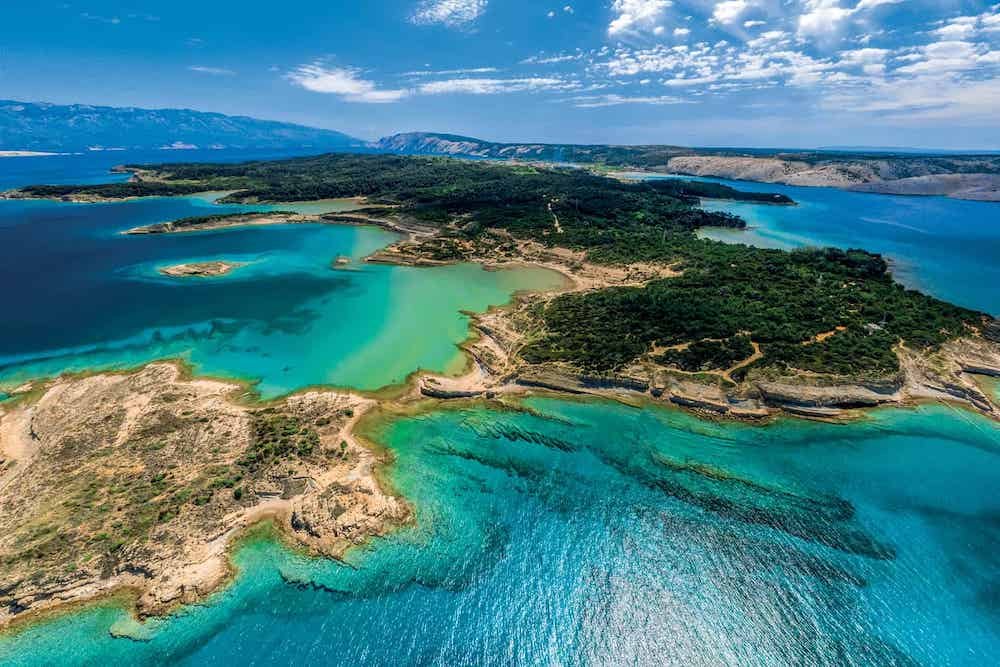
Nestled in the sparkling waters of the Adriatic Sea, Rab is a picturesque island paradise known for its scenic landscapes, historic charm, and vibrant cultural heritage.
With its sandy beaches, medieval architecture, and lush greenery, Rab offers a captivating blend of natural beauty and cultural splendor that delights visitors from around the world.
Rab, often referred to as the “Island of Sunshine,” is located in the northern part of the Croatian Adriatic, near the mainland city of Rijeka.
Its diverse landscapes range from sandy beaches and rocky coves to verdant forests and rolling hills, creating a stunning backdrop for exploration and relaxation.
The island’s main town, also named Rab, is characterized by its well-preserved medieval architecture, charming cobblestone streets, and historic landmarks dating back to Roman times.
With its timeless beauty and warm hospitality, Rab invites travelers to immerse themselves in island life and discover the treasures that await around every corner.
Highlighted Attractions and Activities
Rab offers a wealth of attractions and activities for visitors to enjoy.
The old town of Rab is a UNESCO World Heritage Site renowned for its medieval charm and architectural landmarks.
Visitors can explore the ancient city walls, picturesque squares, and historic churches, including the iconic Cathedral of St. Mary, which dominates the skyline with its majestic bell towers and intricate carvings.
Nature lovers will be enchanted by Rab’s stunning landscapes and outdoor adventures.
The island’s sandy beaches, such as Rajska Plaza (Paradise Beach) and Pudarica Beach, offer sun-drenched shores and crystal-clear waters perfect for swimming, sunbathing, and water sports.
Hiking and cycling trails wind through the island’s lush forests and scenic countryside, providing breathtaking views of the Adriatic and the surrounding islands.
Accessibility and Accommodation Options
Rab is easily accessible via ferry from the mainland ports of Jablanac and Stinica, as well as neighboring islands such as Pag and Krk.
Regular ferry services connect the island to the mainland throughout the year, with additional services available during the peak summer season.
The ferry ride offers stunning views of the Adriatic and takes approximately 15 to 20 minutes, depending on the departure point.
Accommodation options on Rab cater to a range of preferences and budgets, from boutique hotels and seaside resorts to cozy guesthouses and private apartments.
Visitors can choose to stay in the historic town of Rab, where accommodations offer easy access to the town’s attractions, restaurants, and beaches.
Alternatively, secluded villas and holiday homes nestled in the island’s countryside provide peace and tranquility amidst nature’s beauty, allowing guests to unwind and recharge in serenity.
6. Brač
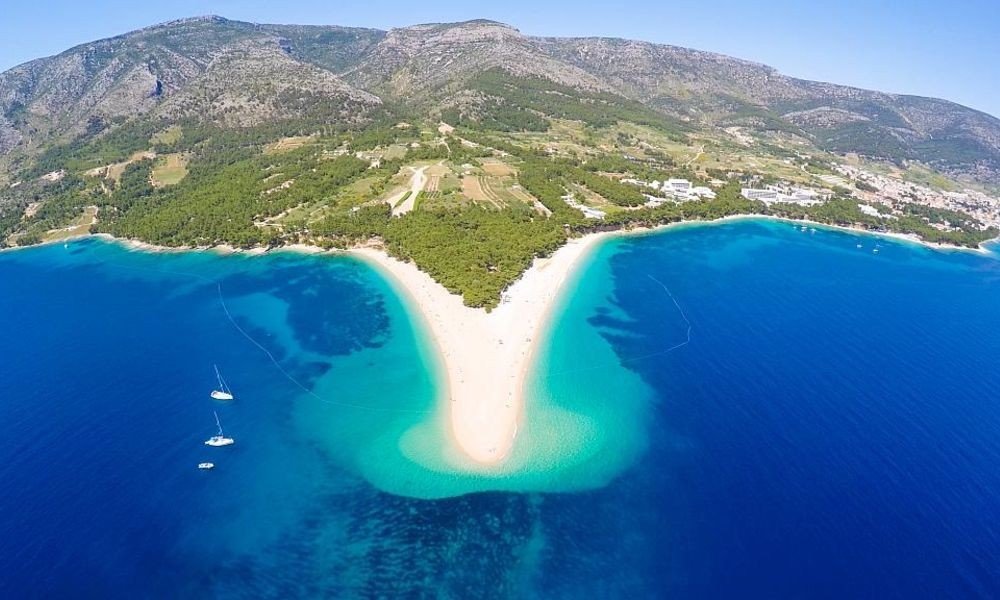
Situated in the crystal-clear waters of the Adriatic Sea, Brač is a captivating island known for its stunning landscapes, rich history, and vibrant culture.
With its iconic beaches, picturesque villages, and limestone cliffs, Brač offers a mesmerizing blend of natural beauty and cultural heritage that enchants visitors from near and far.
Brač, the largest island in the central Dalmatian archipelago, is located near the historic city of Split.
Its diverse terrain ranges from fertile valleys and vineyards to rugged coastlines and pine forests, creating a dynamic landscape that captivates the imagination.
The island’s main town, Supetar, is a charming seaside resort with a bustling harbor, quaint alleyways, and historic churches that reflect its rich maritime history.
With its timeless charm and warm hospitality, Brač invites travelers to explore its hidden treasures and discover the wonders that await around every corner.
Highlighted Attractions and Activities
Brač offers a wealth of attractions and activities for visitors to enjoy.
The island’s most famous landmark is Zlatni Rat (Golden Horn) Beach, a stunning spit of white pebbles and turquoise waters that extends into the sea like a natural tongue.
Visitors can sunbathe, swim, and windsurf on this iconic beach, which offers panoramic views of the Adriatic and the nearby island of Hvar.
Nature enthusiasts will be enchanted by Brač’s diverse landscapes and outdoor adventures.
The island’s network of hiking trails leads through pine forests, olive groves, and vineyards, offering breathtaking views of the coastline and the surrounding islands.
Visitors can explore historic sites such as the Blaca Monastery, an ancient hermitage carved into the cliffs, and the Vidova Gora, the highest peak on the island, which offers panoramic views of the Adriatic and the neighboring islands.
Accessibility and Accommodation Options
Brač is easily accessible via ferry from the mainland ports of Split and Makarska, as well as neighboring islands such as Hvar and Korčula.
Regular ferry services connect the island to the mainland throughout the year, with additional services available during the peak summer season.
The ferry ride offers stunning views of the Adriatic and takes approximately 45 minutes to 1 hour, depending on the departure point.
Accommodation options on Brač cater to a range of preferences and budgets, from luxury resorts and boutique hotels to family-run guesthouses and private apartments.
Visitors can choose to stay in the bustling town of Supetar, where accommodations offer easy access to the town’s attractions, restaurants, and beaches.
Alternatively, secluded villas and holiday homes nestled in the island’s countryside provide peace and tranquility amidst nature’s beauty, allowing guests to unwind and recharge in serenity.
7. Pag
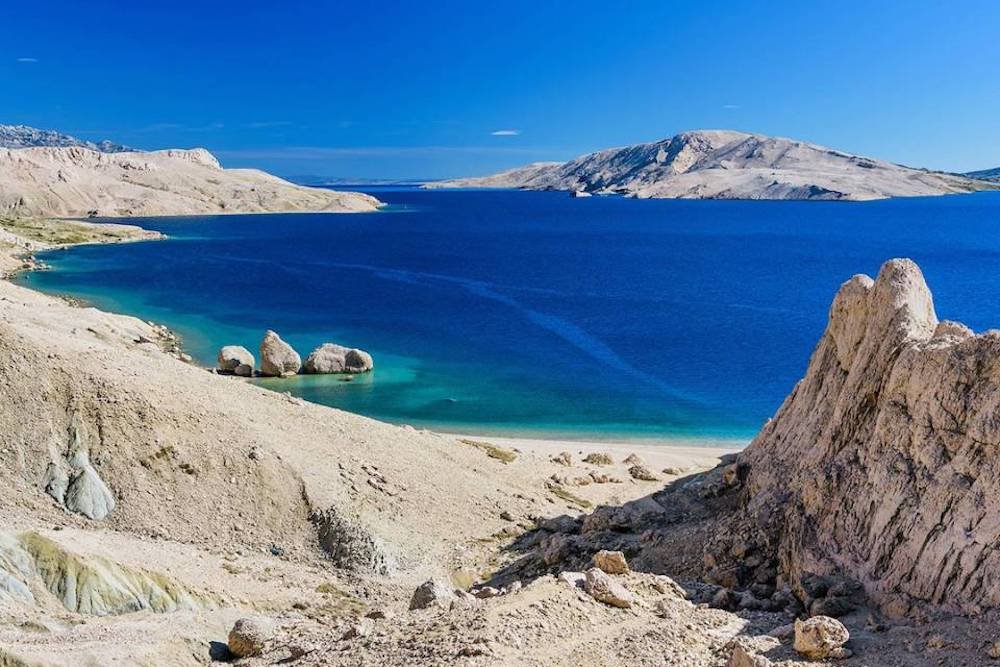
Perched on the shimmering waters of the Adriatic Sea, Pag is a unique island renowned for its lunar-like landscapes, rich cultural heritage, and world-famous cheese.
With its rugged coastline, ancient olive groves, and vibrant festivals, Pag offers a one-of-a-kind experience that captivates the senses and leaves a lasting impression on visitors.
Pag, often referred to as the “Island of Salt and Lace,” is located off the coast of northern Dalmatia, near the city of Zadar.
Its distinctive landscape is characterized by barren limestone plains, sculpted by the bura wind, which gives the island its otherworldly appearance.
Despite its harsh terrain, Pag is home to lush olive groves, fragrant sage fields, and hidden beaches that beckon travelers to explore its rugged beauty and unique charm.
Highlighted Attractions and Activities
Pag offers a wealth of attractions and activities for visitors to discover.
The island’s main town, also named Pag, is a labyrinth of narrow streets, ancient churches, and Venetian-style architecture that reflects its rich history and cultural heritage.
Visitors can explore historic landmarks such as the 15th-century Pag Lace Gallery, which showcases intricate lacework crafted by local artisans, and the Church of St. Mary, a masterpiece of Gothic architecture adorned with ornate carvings and frescoes.
Nature enthusiasts will be mesmerized by Pag’s diverse landscapes and outdoor adventures.
The island’s rugged coastline is dotted with hidden coves, secluded beaches, and crystal-clear waters ideal for swimming, snorkeling, and diving.
Visitors can explore the lunar-like landscape of Pag’s hinterland, where ancient olive groves, stone walls, and grazing sheep create a surreal backdrop for hiking, cycling, and photography.
Accessibility and Accommodation Options
Pag is accessible via bridge from the mainland, making it easily reachable by car or bus from the cities of Zadar and Split.
The bridge connects the island to the town of Prizna on the mainland, offering convenient access for travelers throughout the year.
Additionally, Pag is served by ferry services from neighboring islands such as Rab and Mali Lošinj, providing alternative transportation options for visitors.
Accommodation options on Pag cater to a range of preferences and budgets, from beachfront hotels and luxury resorts to family-run guesthouses and campgrounds.
Visitors can choose to stay in the bustling town of Pag, where accommodations offer easy access to the town’s attractions, restaurants, and beaches.
Alternatively, secluded villas and holiday homes nestled in the island’s countryside provide privacy and tranquility amidst nature’s beauty, allowing guests to unwind and recharge in serenity.
8. Dugi Otok
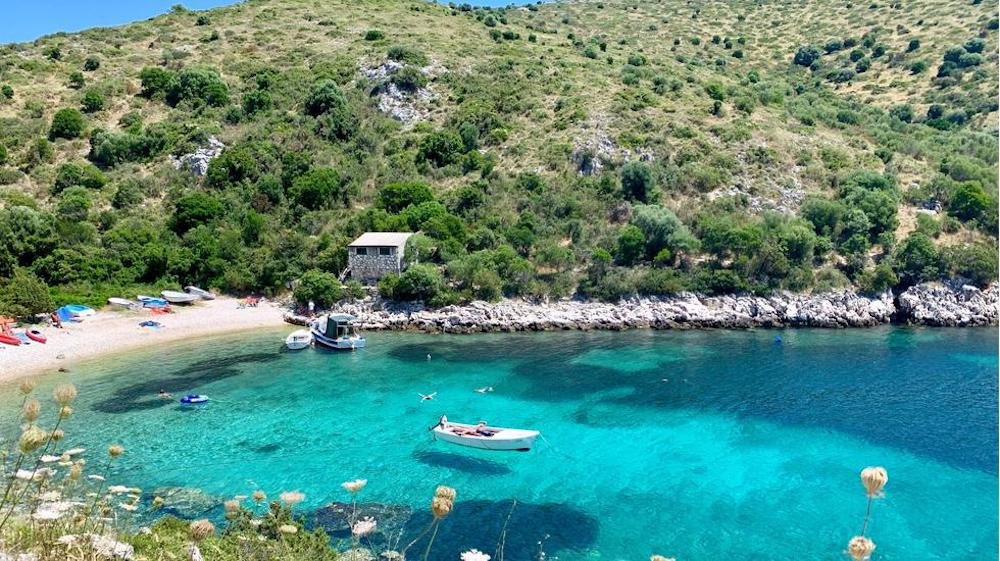
Nestled in the azure waters of the Adriatic Sea, Dugi Otok is a pristine island paradise known for its rugged cliffs, secluded beaches, and tranquil atmosphere.
With its untouched landscapes, crystal-clear waters, and charming villages, Dugi Otok offers a serene retreat away from the hustle and bustle of modern life, where visitors can reconnect with nature and immerse themselves in island living.
Dugi Otok, which translates to “Long Island” in Croatian, is located off the coast of northern Dalmatia, near the city of Zadar.
Its elongated shape stretches over 45 kilometers, making it one of the largest islands in the Zadar archipelago.
Dugi Otok is characterized by its dramatic cliffs, hidden coves, and crystal-clear bays that offer breathtaking views of the Adriatic and the surrounding islands.
With its pristine landscapes and laid-back atmosphere, Dugi Otok beckons travelers to explore its hidden treasures and discover the wonders that await around every corner.
Highlighted Attractions and Activities
Dugi Otok offers a wealth of attractions and activities for visitors to enjoy.
The island’s main town, Sali, is a charming fishing village with a picturesque harbor, historic churches, and waterfront cafes serving freshly caught seafood and local delicacies.
Visitors can wander through the town’s narrow streets, discovering ancient stone houses, traditional konoba taverns, and artisan shops selling handmade souvenirs.
Nature enthusiasts will be enchanted by Dugi Otok’s stunning landscapes and outdoor adventures.
The island’s rugged coastline is dotted with hidden coves, secluded beaches, and pristine bays ideal for swimming, snorkeling, and diving.
Visitors can explore the Telašćica Nature Park, a protected marine reserve home to diverse marine life, underwater caves, and saltwater lakes that offer unique opportunities for exploration and discovery.
Accessibility and Accommodation Options
Dugi Otok is accessible via ferry from the mainland port of Zadar, as well as neighboring islands such as Ugljan and Pašman.
Regular ferry services connect the island to Zadar throughout the year, with additional services available during the peak summer season.
The ferry ride offers stunning views of the Adriatic and takes approximately one to two hours, depending on the departure point.
Accommodation options on Dugi Otok cater to a range of preferences and budgets, from beachfront hotels and family-run guesthouses to secluded villas and eco-friendly campsites.
Visitors can choose to stay in the charming villages of Sali, Božava, or Brbinj, where accommodations offer easy access to the island’s attractions, restaurants, and beaches.
Alternatively, secluded cottages and holiday homes nestled in the island’s countryside provide privacy and tranquility amidst nature’s beauty, allowing guests to unwind and recharge in serenity.
9. Mljet
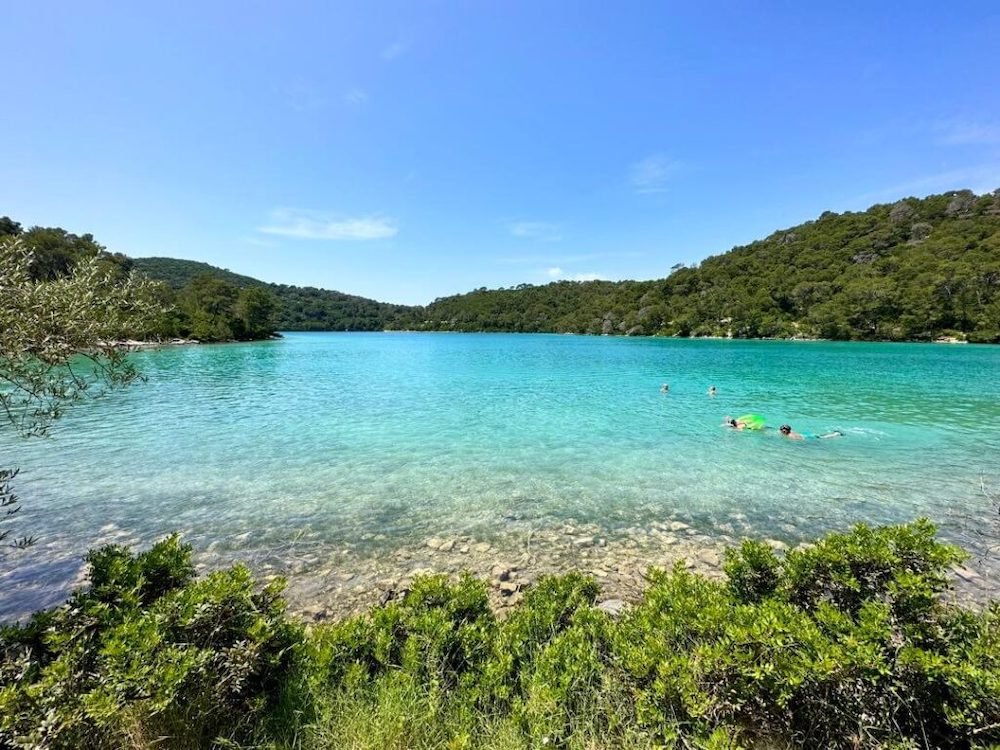
Located in the heart of the Adriatic Sea, Mljet is a tranquil island oasis known for its lush greenery, pristine landscapes, and ancient history.
With its dense pine forests, crystal-clear lakes, and secluded beaches, Mljet offers a serene retreat away from the crowds, where visitors can immerse themselves in nature’s tranquility and discover the island’s timeless beauty.
Mljet, often referred to as the “Green Island,” is situated off the southern coast of Croatia, near the Pelješac Peninsula and the island of Korčula.
Its verdant landscapes are dominated by dense pine forests, fragrant Mediterranean shrubs, and tranquil lakes that create a peaceful and enchanting atmosphere.
The island’s main attractions include the Mljet National Park, home to two saltwater lakes, lush hiking trails, and ancient ruins that date back to Roman times.
With its unspoiled beauty and rich biodiversity, Mljet offers a paradise for nature lovers and outdoor enthusiasts.
Highlighted Attractions and Activities
Mljet offers a variety of attractions and activities for visitors to enjoy.
The Mljet National Park is the island’s crown jewel, encompassing the pristine waters of the Veliko and Malo Jezero (Large and Small Lakes), as well as the picturesque islet of St. Mary, home to a Benedictine monastery dating back to the 12th century.
Visitors can explore the park’s hiking and cycling trails, swim in the tranquil lakes, and kayak along the scenic coastline, immersing themselves in the island’s natural beauty and tranquility.
History enthusiasts will be fascinated by Mljet’s rich cultural heritage and ancient landmarks.
The island is dotted with archaeological sites, including the ruins of a Roman palace, ancient settlements, and medieval churches, which offer insight into Mljet’s storied past and cultural significance.
Visitors can explore the historic town of Polače, with its ancient Roman ruins and scenic harbor, or wander through the charming villages of Goveđari and Pomena, where traditional stone houses and narrow streets evoke a sense of timeless charm and authenticity.
Accessibility and Accommodation Options
Mljet is accessible via ferry from the mainland ports of Dubrovnik, Split, and Prapratno on the Pelješac Peninsula.
Regular ferry services connect the island to the mainland throughout the year, with additional services available during the peak summer season.
The ferry ride offers stunning views of the Adriatic and takes approximately one to two hours, depending on the departure point.
Accommodation options on Mljet cater to a range of preferences and budgets, from eco-friendly resorts and boutique hotels to private villas and guesthouses.
Visitors can choose to stay within the Mljet National Park, where accommodations offer easy access to the park’s attractions, hiking trails, and lakeside beaches.
Alternatively, secluded cottages and holiday homes nestled in the island’s countryside provide privacy and tranquility amidst nature’s beauty, allowing guests to unwind and reconnect with the natural world.
10. Hvar
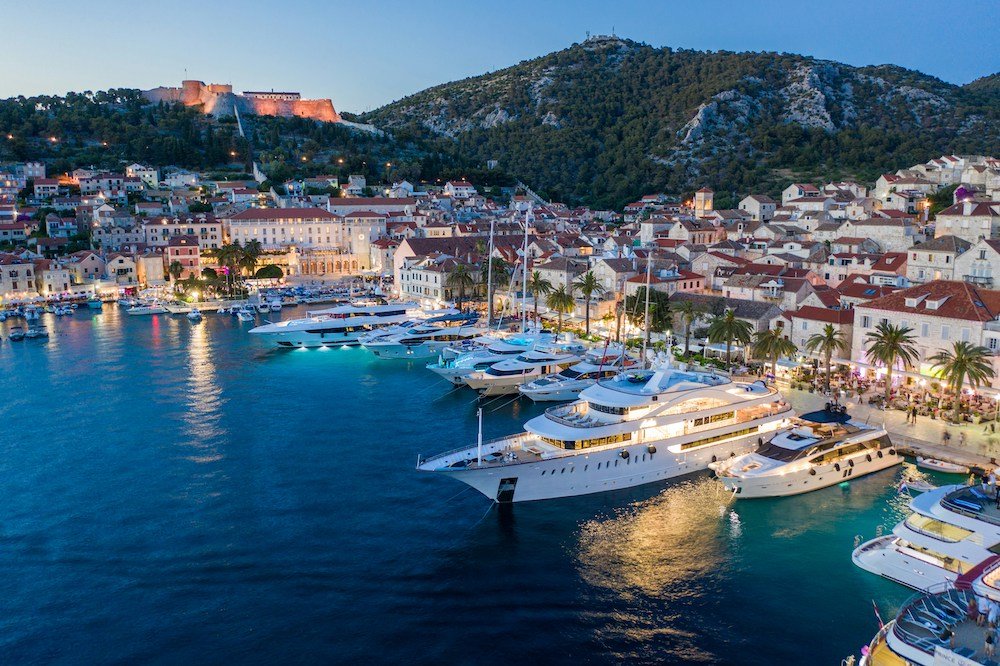
Nestled in the sun-kissed waters of the Adriatic Sea, Hvar is a jewel of the Croatian coastline, renowned for its stunning landscapes, rich history, and vibrant nightlife.
With its lavender fields, ancient vineyards, and medieval towns, Hvar offers a captivating blend of natural beauty, cultural heritage, and cosmopolitan charm that enchants visitors from around the world.
Hvar, often referred to as the “Queen of the Dalmatian Islands,” is located off the coast of southern Croatia, near the city of Split.
Its sun-drenched shores, crystal-clear waters, and lush vegetation create a picturesque backdrop for exploration and relaxation.
The island’s main town, also named Hvar, is a bustling hub of activity, with its historic squares, Renaissance architecture, and vibrant cafes and restaurants that line the waterfront.
With its vibrant culture, lively atmosphere, and warm hospitality, Hvar invites travelers to experience the beauty and excitement of Croatian island life.
Highlighted Attractions and Activities
Hvar offers a wealth of attractions and activities for visitors to enjoy.
The historic town of Hvar is home to architectural landmarks such as the 16th-century Hvar Cathedral, the Arsenal, and the Franciscan Monastery, which houses a rich collection of Renaissance art and artifacts.
Visitors can wander through the narrow cobblestone streets, discovering hidden squares, ancient churches, and panoramic viewpoints that offer breathtaking views of the Adriatic and the nearby Pakleni Islands.
Nature enthusiasts will be enchanted by Hvar’s stunning landscapes and outdoor adventures.
The island’s verdant hillsides are dotted with vineyards, olive groves, and lavender fields, creating a patchwork of colors and scents that captivate the senses.
Visitors can explore the island’s hiking and cycling trails, swim in secluded coves and pristine beaches, or embark on boat trips to the nearby Pakleni Islands, where crystal-clear waters and hidden bays await discovery.
Accessibility and Accommodation Options
Hvar is accessible via ferry from the mainland ports of Split, Drvenik, and Dubrovnik, as well as neighboring islands such as Brač and Korčula.
Regular ferry services connect the island to the mainland throughout the year, with additional services available during the peak summer season.
The ferry ride offers stunning views of the Adriatic and takes approximately one to two hours, depending on the departure point.
Accommodation options on Hvar cater to a range of preferences and budgets, from luxury resorts and boutique hotels to family-run guesthouses and private villas.
Visitors can choose to stay in the historic town of Hvar, where accommodations offer easy access to the town’s attractions, restaurants, and beaches.
Alternatively, secluded villas and holiday homes nestled in the island’s countryside provide privacy and tranquility amidst nature’s beauty, allowing guests to unwind and recharge in serenity.
11. Cres
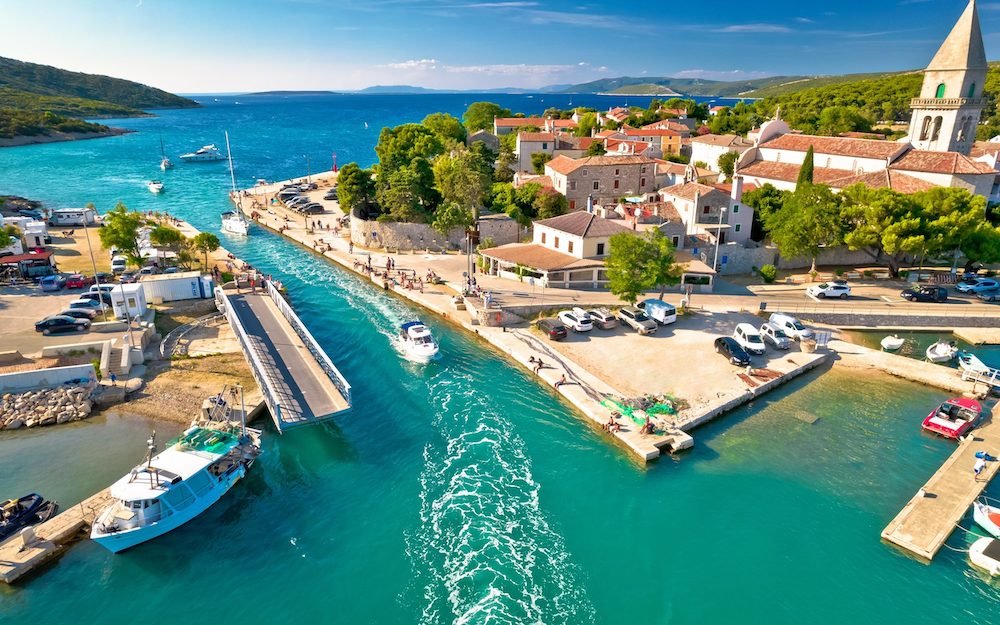
Nestled in the turquoise waters of the Kvarner Gulf, Cres is a tranquil island paradise known for its rugged beauty, pristine landscapes, and rich cultural heritage.
With its ancient towns, secluded beaches, and diverse wildlife, Cres offers a peaceful retreat away from the hustle and bustle of modern life, where visitors can reconnect with nature and experience the timeless charm of Croatian island living.
Cres, the largest island in the Adriatic, is located in the northern part of the Croatian coastline, near the city of Rijeka.
Its diverse terrain ranges from rocky cliffs and olive groves to lush forests and hidden coves, creating a captivating landscape that enchants travelers with its natural beauty and serenity.
The island’s main town, Cres Town, is a charming seaside village with narrow cobblestone streets, historic churches, and colorful houses that reflect its rich maritime history and Venetian influence.
With its unspoiled landscapes and laid-back atmosphere, Cres invites visitors to explore its hidden treasures and discover the wonders of island life.
Highlighted Attractions and Activities
Cres offers a variety of attractions and activities for visitors to enjoy.
The island’s rugged coastline is dotted with secluded beaches, hidden coves, and crystal-clear waters ideal for swimming, snorkeling, and sunbathing.
Visitors can explore the charming villages of Lubenice and Valun, with their ancient stone houses and picturesque harbors, or wander through the lush forests of Tramuntana, where hiking and cycling trails offer breathtaking views of the Adriatic and the neighboring islands.
Nature enthusiasts will be delighted by Cres’s diverse landscapes and abundant wildlife.
The island is home to rare bird species such as griffon vultures, golden eagles, and hoopoes, as well as endemic plant species and freshwater springs that sustain a rich ecosystem of flora and fauna.
Visitors can explore the island’s nature reserves, including the Tramuntana Forest Park and the Blue Cave, or embark on boat trips to the nearby islands of Lošinj and Krk, where marine life and underwater caves await discovery.
Accessibility and Accommodation Options
Cres is accessible via ferry from the mainland ports of Rijeka, Valbiska, and Merag, as well as neighboring islands such as Krk and Lošinj.
Regular ferry services connect the island to the mainland throughout the year, with additional services available during the peak summer season.
The ferry ride offers stunning views of the Kvarner Gulf and takes approximately one to two hours, depending on the departure point.
Accommodation options on Cres cater to a range of preferences and budgets, from beachfront hotels and boutique guesthouses to rustic cottages and campsites.
Visitors can choose to stay in Cres Town, where accommodations offer easy access to the town’s attractions, restaurants, and beaches.
Alternatively, secluded villas and holiday homes nestled in the island’s countryside provide privacy and tranquility amidst nature’s beauty, allowing guests to unwind and reconnect with the natural world.
12. Krk

Situated in the glistening waters of the Adriatic Sea, Krk is a captivating island known for its historic towns, scenic landscapes, and rich cultural heritage.
With its ancient monuments, pristine beaches, and vibrant atmosphere, Krk offers a perfect blend of history, nature, and relaxation, making it a cherished destination for travelers seeking an authentic Croatian experience.
Krk, often referred to as the “Golden Island,” is located in the northern Adriatic, near the city of Rijeka.
As the largest island in Croatia, Krk boasts a diverse landscape of rocky coastlines, lush vineyards, and fertile plains, creating a picturesque backdrop for exploration and discovery.
The island’s main town, also named Krk, is a charming blend of ancient architecture, narrow cobblestone streets, and vibrant cafes and shops that reflect its rich history and cultural heritage.
With its warm Mediterranean climate and welcoming atmosphere, Krk invites visitors to explore its hidden treasures and experience the beauty of island life.
Highlighted Attractions and Activities
Krk offers a wealth of attractions and activities for visitors to enjoy.
The historic town of Krk is home to architectural landmarks such as the 12th-century Frankopan Castle, the Cathedral of St. Mary, and the medieval city walls, which offer panoramic views of the Adriatic and the surrounding islands.
Visitors can wander through the town’s charming squares, discover hidden churches and monasteries, or explore the narrow alleys lined with artisan shops and galleries.
Nature enthusiasts will be delighted by Krk’s stunning landscapes and outdoor adventures.
The island’s rugged coastline is dotted with secluded coves, hidden beaches, and crystal-clear waters ideal for swimming, snorkeling, and diving.
Visitors can explore the island’s hiking and cycling trails, discover hidden waterfalls and freshwater springs, or embark on boat trips to the nearby islands of Cres, Rab, and Pag, where marine life and natural wonders await discovery.
Accessibility and Accommodation Options
Krk is accessible via bridge from the mainland, making it easily reachable by car or bus from the cities of Rijeka and Zagreb.
The bridge connects the island to the mainland near the town of Bakar, offering convenient access for travelers throughout the year.
Additionally, Krk is served by ferry services from neighboring islands such as Cres, Rab, and Pag, providing alternative transportation options for visitors.
Accommodation options on Krk cater to a range of preferences and budgets, from luxury resorts and boutique hotels to family-run guesthouses and campsites.
Visitors can choose to stay in the historic town of Krk, where accommodations offer easy access to the town’s attractions, restaurants, and beaches.
Alternatively, secluded villas and holiday homes nestled in the island’s countryside provide privacy and tranquility amidst nature’s beauty, allowing guests to unwind and recharge in serenity.
13. Lastovo
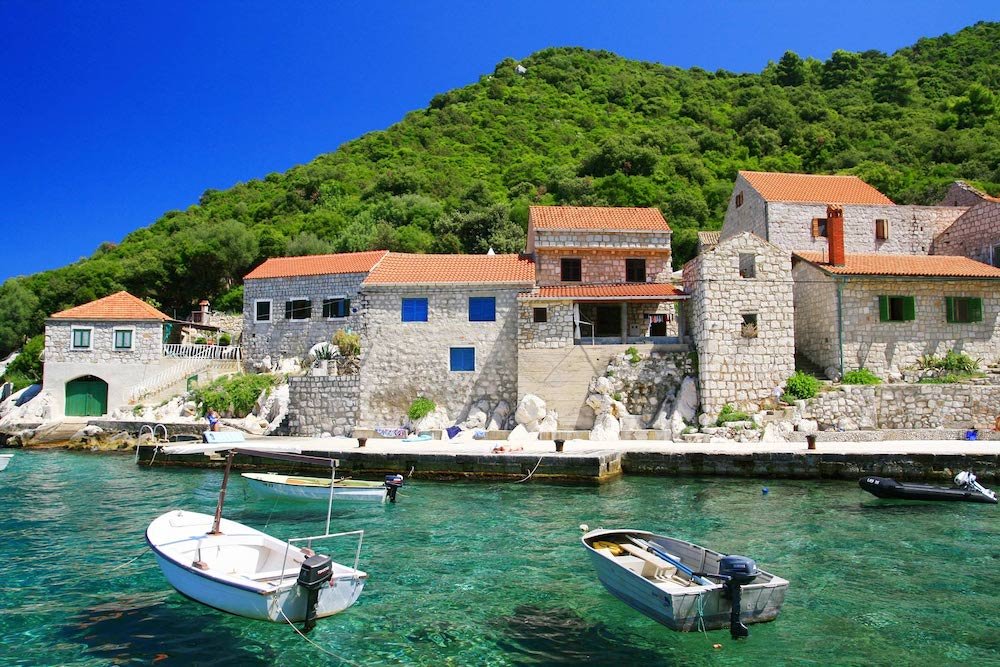
Tucked away in the pristine waters of the Adriatic Sea, Lastovo is a hidden gem known for its untouched nature, secluded beaches, and rich cultural heritage.
With its rugged coastline, lush forests, and charming villages, Lastovo offers a tranquil escape from the modern world, where visitors can immerse themselves in the island’s natural beauty and timeless charm.
Lastovo, located in the southern part of the Dalmatian archipelago, is one of Croatia’s most remote and unspoiled islands.
Its rugged terrain is characterized by dramatic cliffs, hidden coves, and crystal-clear waters, creating a breathtaking backdrop for exploration and adventure.
The island’s main town, also named Lastovo, is a picturesque village with narrow cobblestone streets, ancient churches, and traditional stone houses that reflect its rich history and cultural heritage.
With its peaceful atmosphere and warm hospitality, Lastovo invites visitors to discover its hidden treasures and experience the beauty of island life.
Highlighted Attractions and Activities
Lastovo offers a variety of attractions and activities for visitors to enjoy.
The island’s rugged coastline is dotted with secluded beaches, hidden bays, and pristine coves ideal for swimming, snorkeling, and sunbathing.
Visitors can explore the charming villages of Ubli, Pasadur, and Zaklopatica, with their traditional architecture and scenic waterfronts, or hike through the island’s lush forests and olive groves, discovering hidden trails and panoramic viewpoints along the way.
Nature enthusiasts will be enchanted by Lastovo’s diverse landscapes and abundant wildlife.
The island is home to rare bird species such as the Mediterranean shearwater and the Eleonora’s falcon, as well as endemic plant species and marine life that thrive in its clear blue waters.
Visitors can explore the island’s nature reserves, including the Lastovo Archipelago Nature Park, which encompasses over 40 islands and islets, or embark on boat trips to the nearby islands of Vis and Korčula, where marine life and natural wonders await discovery.
Accessibility and Accommodation Options
Lastovo is accessible via ferry from the mainland ports of Split, Dubrovnik, and Ploče, as well as neighboring islands such as Korčula and Vis.
Regular ferry services connect the island to the mainland throughout the year, with additional services available during the peak summer season.
The ferry ride offers stunning views of the Adriatic and takes approximately two to three hours, depending on the departure point.
Accommodation options on Lastovo cater to a range of preferences and budgets, from family-run guesthouses and boutique hotels to rustic cottages and campsites.
Visitors can choose to stay in the historic town of Lastovo, where accommodations offer easy access to the town’s attractions, restaurants, and beaches.
Alternatively, secluded villas and holiday homes nestled in the island’s countryside provide privacy and tranquility amidst nature’s beauty, allowing guests to unwind and reconnect with the natural world.
14. Sipan
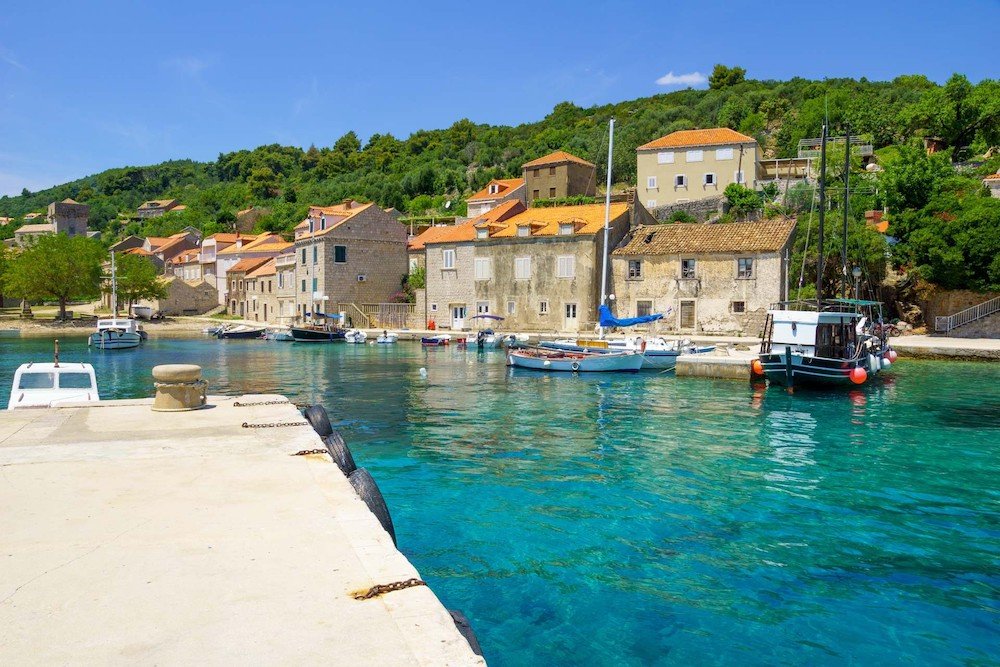
Nestled in the sparkling waters of the Adriatic Sea, Sipan is a picturesque island known for its tranquil atmosphere, scenic landscapes, and rich history.
With its lush olive groves, charming villages, and historic monuments, Sipan offers a serene escape from the hustle and bustle of modern life, where visitors can immerse themselves in the island’s natural beauty and timeless charm.
Sipan, located in the Elaphiti archipelago near the city of Dubrovnik, is the largest of the Elaphiti Islands and is renowned for its unspoiled beauty and relaxed ambiance.
The island’s gentle hillsides are covered with vineyards, citrus orchards, and fragrant pine forests, creating a peaceful and idyllic setting that invites travelers to explore its hidden treasures and discover the magic of island life.
With its warm Mediterranean climate and stunning vistas, Sipan offers a perfect retreat for nature lovers, history enthusiasts, and those seeking tranquility amidst nature’s splendor.
Highlighted Attractions and Activities
Sipan offers a variety of attractions and activities for visitors to enjoy.
The island’s main town, also named Sipan, is a charming village with narrow cobblestone streets, ancient churches, and elegant villas that reflect its rich history and cultural heritage.
Visitors can explore historic landmarks such as the Sipan Castle, a 16th-century fortress overlooking the town, or wander through the lush gardens and olive groves that dot the island’s countryside.
Nature enthusiasts will be delighted by Sipan’s diverse landscapes and outdoor adventures.
The island’s rugged coastline is dotted with secluded coves, hidden beaches, and crystal-clear waters ideal for swimming, snorkeling, and sunbathing.
Visitors can explore the island’s hiking and cycling trails, discover hidden caves and rock formations, or embark on boat trips to the nearby islands of Lopud and Koločep, where marine life and natural wonders await discovery.
Accessibility and Accommodation Options
Sipan is accessible via ferry from the mainland port of Dubrovnik, as well as neighboring islands such as Lopud and Koločep.
Regular ferry services connect the island to Dubrovnik throughout the year, with additional services available during the peak summer season.
The ferry ride offers stunning views of the Adriatic and takes approximately one hour, providing convenient access for travelers from Dubrovnik and beyond.
Accommodation options on Sipan cater to a range of preferences and budgets, from family-run guesthouses and boutique hotels to rustic cottages and campsites.
Visitors can choose to stay in the historic town of Sipan, where accommodations offer easy access to the town’s attractions, restaurants, and beaches.
Alternatively, secluded villas and holiday homes nestled in the island’s countryside provide privacy and tranquility amidst nature’s beauty, allowing guests to unwind and reconnect with the natural world.
15. Murter

Located in the pristine waters of the Adriatic Sea, Murter is a captivating island known for its rugged coastline, crystal-clear waters, and vibrant cultural scene.
With its charming villages, secluded beaches, and rich maritime heritage, Murter offers a perfect blend of natural beauty, history, and relaxation, making it a cherished destination for travelers seeking an authentic Croatian experience.
Murter, situated in the northern part of the Dalmatian coast, is the largest of the Kornati Islands and serves as a gateway to the stunning Kornati National Park.
Its rugged terrain is characterized by rocky cliffs, hidden coves, and turquoise bays that offer breathtaking views of the Adriatic and the surrounding islands.
The island’s main town, also named Murter, is a picturesque fishing village with narrow cobblestone streets, historic churches, and waterfront cafes that reflect its rich maritime history and cultural heritage.
With its laid-back atmosphere and warm hospitality, Murter invites visitors to discover its hidden treasures and experience the magic of island life.
Highlighted Attractions and Activities
Murter offers a variety of attractions and activities for visitors to enjoy.
The island’s rugged coastline is dotted with secluded beaches, hidden coves, and pristine bays ideal for swimming, snorkeling, and sunbathing.
Visitors can explore the charming villages of Murter, Betina, and Tisno, with their traditional stone houses and scenic waterfronts, or hike through the island’s pine forests and olive groves, discovering hidden trails and panoramic viewpoints along the way.
Nature enthusiasts will be enchanted by Murter’s diverse landscapes and outdoor adventures.
The island is surrounded by the Kornati National Park, a protected marine reserve consisting of over 100 islands and islets renowned for their stunning natural beauty and rich biodiversity.
Visitors can explore the park’s hiking trails, dive into its crystal-clear waters, or sail along its picturesque coastline, immersing themselves in the wonders of nature and discovering the hidden gems of the Adriatic.
Accessibility and Accommodation Options
Murter is accessible via bridge from the mainland, making it easily reachable by car or bus from the cities of Zadar and Šibenik.
The bridge connects the island to the mainland near the town of Tisno, offering convenient access for travelers throughout the year.
Additionally, Murter is served by ferry services from neighboring islands such as Pašman and Ugljan, providing alternative transportation options for visitors.
Accommodation options on Murter cater to a range of preferences and budgets, from beachfront hotels and boutique guesthouses to family-run apartments and campsites.
Visitors can choose to stay in the historic town of Murter, where accommodations offer easy access to the town’s attractions, restaurants, and beaches.
Alternatively, secluded villas and holiday homes nestled in the island’s countryside provide privacy and tranquility amidst nature’s beauty, allowing guests to unwind and recharge in serenity.
Travel Tips and Practical Information
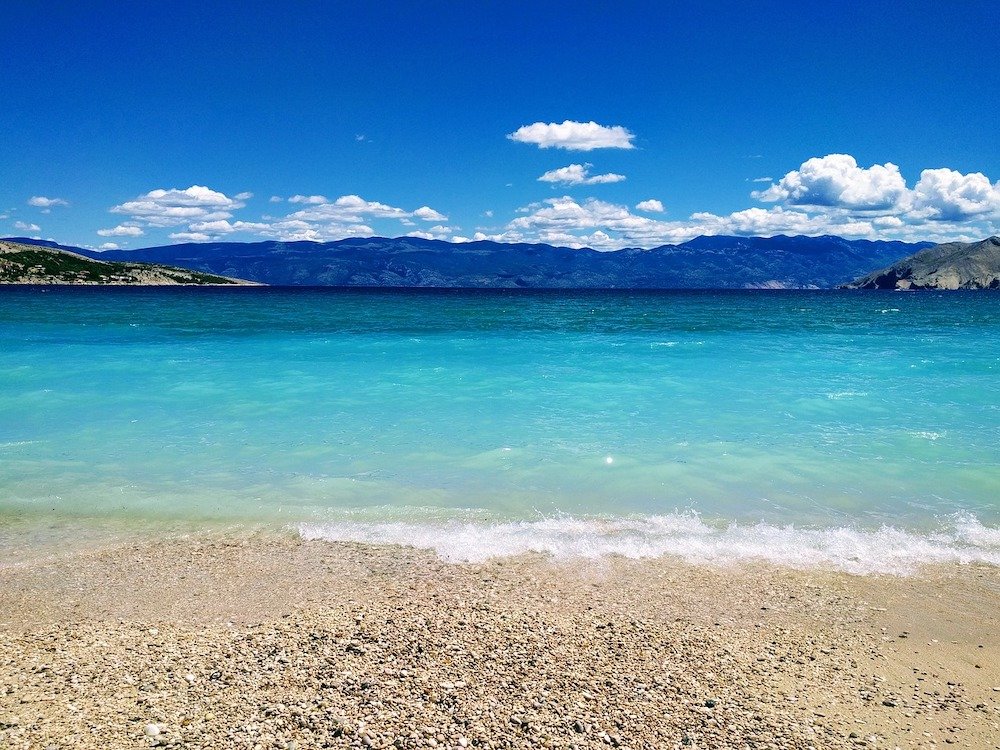
How to Get to Croatian Islands
Getting to Croatian islands typically involves taking a ferry or catamaran from mainland ports or neighboring islands.
Ferry services operate regularly throughout the year, with increased frequency during the peak summer season.
Major ferry ports such as Split, Dubrovnik, Zadar, and Rijeka offer connections to various Croatian islands, including popular destinations like Hvar, Korčula, and Brac.
Visitors can also opt for private boat transfers or organized tours for a more personalized travel experience.
Accommodation Options
Croatian islands offer a wide range of accommodation options to suit every traveler’s preferences and budget.
From luxury resorts and boutique hotels to family-run guesthouses and seaside villas, visitors can find accommodations that cater to their needs.
Additionally, campsites, holiday homes, and apartment rentals provide affordable alternatives for those seeking a more independent and immersive island experience.
It’s advisable to book accommodations well in advance, especially during the peak summer months, to secure the best options.
Best Time to Visit
The best time to visit Croatian islands largely depends on individual preferences and travel interests.
The peak tourist season typically occurs during the summer months, from June to August, when the weather is warm and sunny, and outdoor activities abound.
However, this period also sees larger crowds and higher prices, especially in popular tourist destinations.
Shoulder seasons such as spring (April to May) and autumn (September to October) offer milder temperatures, fewer tourists, and more affordable accommodations, making them ideal times to visit for those seeking a quieter and more budget-friendly island experience.
Local Cuisine and Dining Options
Croatian cuisine is characterized by fresh seafood, locally sourced ingredients, and Mediterranean flavors.
Visitors to Croatian islands can indulge in a variety of traditional dishes such as grilled fish, octopus salad, seafood risotto, and peka (a slow-cooked meat or seafood dish).
Island restaurants and konoba taverns offer authentic dining experiences, serving up delicious seafood specialties, homemade pasta, and flavorful regional wines.
It’s also worth exploring local markets and bakeries for fresh produce, artisanal cheeses, and freshly baked bread, ideal for picnics and casual meals.
Safety Tips and Considerations
While Croatian islands are generally safe and welcoming destinations for travelers, it’s essential to exercise common sense and take basic precautions to ensure a safe and enjoyable trip.
Be mindful of your belongings, especially in crowded tourist areas, and keep valuables secure at all times.
Stay informed about local weather conditions and follow any safety advisories issued by local authorities, particularly during periods of inclement weather or rough seas.
When swimming or participating in water activities, heed warning signs and adhere to safety guidelines to prevent accidents or injuries.
Lastly, be respectful of local customs and traditions, and practice responsible tourism by minimizing your environmental impact and supporting local businesses and communities.
Conclusion
Throughout this journey, we’ve explored the breathtaking beauty and rich diversity of Croatian islands, each offering its own unique charm and allure.
From the rugged landscapes of Cres to the tranquil shores of Mljet, these islands captivate the imagination with their pristine beaches, crystal-clear waters, and ancient heritage.
Whether you seek adventure, relaxation, or cultural immersion, Croatian islands provide an idyllic setting for unforgettable experiences and cherished memories.
As you contemplate your next travel adventure, we encourage you to consider the enchanting Croatian islands as your destination of choice.
Whether you’re drawn to the vibrant nightlife of Hvar, the historic charm of Korčula, or the secluded beauty of Lastovo, each island beckons with its own distinct character and allure.
Embark on a journey of discovery, where hidden coves, ancient ruins, and azure waters await exploration, and let the magic of Croatian islands captivate your senses and soothe your soul.
The Croatian islands play a vital role in the country’s tourism industry, attracting millions of visitors each year with their natural beauty, cultural heritage, and warm hospitality.
As cherished destinations for travelers from around the world, these islands contribute significantly to Croatia’s economy and cultural identity, serving as ambassadors of the country’s rich history and maritime traditions.
By preserving their natural landscapes, promoting sustainable tourism practices, and celebrating their unique heritage, Croatian islands continue to inspire and enchant travelers, ensuring their legacy as timeless treasures of the Adriatic.
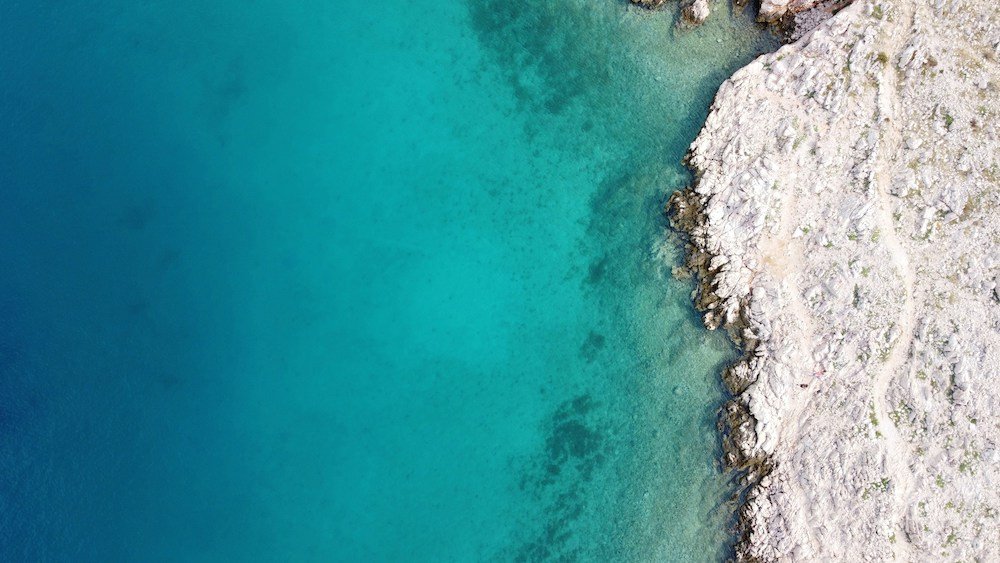
FAQ’s About Croatia Islands:
Which is the best Croatian island to visit?
Determining the “best” Croatian island to visit depends on individual preferences and interests.
However, some of the most popular and highly recommended islands include Hvar, Dubrovnik, Korčula, Brač, and Krk.
These islands offer a diverse range of attractions, including stunning beaches, historic towns, cultural landmarks, and vibrant nightlife, making them appealing destinations for travelers seeking relaxation, adventure, and cultural immersion.
How many islands are there in Croatia?
Croatia boasts over 1,000 islands scattered along its picturesque coastline in the Adriatic Sea.
However, only about 50 of these islands are inhabited, while the rest remain uninhabited and pristine, offering stunning natural landscapes and secluded retreats for travelers to explore and enjoy.
What is the most visited Croatian island?
Hvar is often considered one of the most visited Croatian islands, renowned for its natural beauty, historic architecture, and vibrant atmosphere.
The island attracts travelers from around the world with its picturesque beaches, lively nightlife, and cultural festivals, making it a popular destination for sun-seekers, history buffs, and party-goers alike.
What are the islands around Croatia called?
The islands around Croatia are collectively known as the Croatian Islands or the Dalmatian Islands.
This archipelago includes over 1,000 islands, islets, and reefs scattered along the Croatian coastline in the Adriatic Sea, offering travelers a diverse array of destinations to explore and discover.
Is Croatia or Greek islands better?
The choice between Croatia and the Greek islands depends on personal preferences, interests, and travel priorities.
Both destinations offer stunning landscapes, rich history, and vibrant culture, as well as a variety of attractions and activities for travelers to enjoy.
Croatia is known for its picturesque coastline, historic towns, and island-hopping adventures, while the Greek islands offer diverse landscapes, ancient ruins, and legendary hospitality.
Ultimately, the “better” destination depends on individual preferences and what each traveler seeks to experience and explore.
How many days in Croatia is enough?
The ideal duration for a trip to Croatia depends on the traveler’s interests, itinerary, and available time.
While some travelers may choose to spend a few days exploring a single city or island, others may opt for a more extensive itinerary covering multiple destinations across the country.
A week to ten days is often considered a good amount of time to explore Croatia’s highlights, including its historic cities, stunning coastline, and picturesque islands, allowing travelers to immerse themselves in the country’s culture, history, and natural beauty.
What is a good month to visit Croatia?
Croatia enjoys a Mediterranean climate, with hot summers and mild winters, making it a year-round destination for travelers.
The peak tourist season occurs during the summer months, from June to August, when the weather is warm and sunny, and outdoor activities abound.
However, the shoulder seasons of spring (April to May) and autumn (September to October) offer milder temperatures, fewer crowds, and more affordable accommodations, making them ideal times to visit for those seeking a quieter and more budget-friendly experience.
What is the best time to visit Croatia?
The best time to visit Croatia largely depends on individual preferences and travel priorities.
For travelers seeking warm weather, vibrant atmosphere, and lively festivals, the summer months of June to August are ideal.
However, those looking to avoid crowds and high prices may prefer visiting during the shoulder seasons of spring (April to May) or autumn (September to October), when the weather is still pleasant, and attractions are less crowded.
Winter can also be a magical time to visit Croatia, particularly for those interested in holiday festivities, winter sports, and cultural events.
Is Croatia expensive for a holiday?
The cost of a holiday in Croatia can vary depending on factors such as travel season, destination, accommodation, dining preferences, and activities.
While Croatia can be more affordable than some other European destinations, particularly outside of the peak tourist season, prices can still vary significantly depending on the region and level of luxury desired.
Travelers can find budget-friendly options such as guesthouses, hostels, and local eateries, as well as more upscale accommodations and dining experiences catering to luxury travelers.
Overall, Croatia offers a range of options to suit different budgets and travel styles, making it accessible to a wide range of travelers.
